20 Wild Animals in Lithuania [Wildlife in Lithuania]
Want to know more about the wildlife in Lithuania?
Discover 20 wild animals in Lithuania in this post, as well as interesting facts about them. 🇱🇹
Learn All About Lithuanian Animals
Ready to learn all about Lithuanian animals?
I’ve always been fascinated by animals, and by how they can be so different from one country to another. In this guide, we’ll focus on the many animals Lithuania has on the land, in the sky, and underwater.
I’ve split the guide into 5 categories:
- Native animals from Lithuania
- Endangered animals of Lithuania
- What is the national animal of Lithuania?
- How many animals native to Lithuania?
- What dangerous animals live in Lithuania?
Let’s dive in right away with our first category!
Native Animals from Lithuania
Lithuania is a European country located in the northeastern part of the continent, next to the Baltic Sea. It is one of the Baltic states alongside Estonia and Latvia, is one of the best countries in the world in terms of press freedom, internet freedom, civil liberties, and peacefulness, and it has been inhabited by Baltic tribes for millennia. It is bordered by Poland, Latvia, and Belarus, and its capital and largest city is Vilnius, which counts more than 592,000 inhabitants (but more than 706,000 if you include the metropolitan area).
An interesting part of the country that I wanted to tackle is its wildlife. In light of that, I have listed the best of it, and I hope you will love learning what animals live in Lithuania.
Here’s the Lithuania animals list.
1. Eurasian beaver
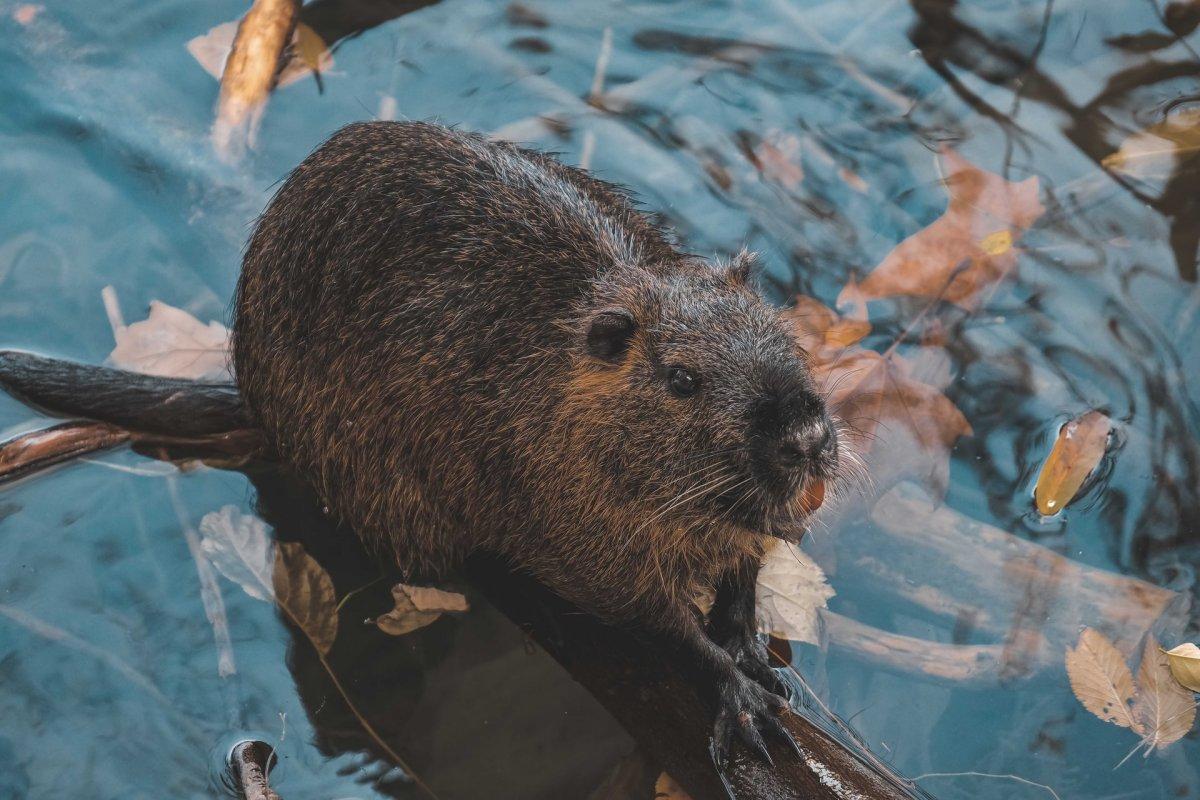
- Name: Eurasian beaver
- Scientific name: Castor fiber
- Conservation status:
The Eurasian beaver, also known as the European beaver, is a species of beaver that can be found in central and eastern Europe and in western and central Asia.
While it was once widespread in all of Eurasia, it was hunted to near extinction: at the beginning of the 20th century, fewer than 1,200 individuals survived. Now though, it has been reintroduced to much of its former range and is considered of least concern.
2. Moose
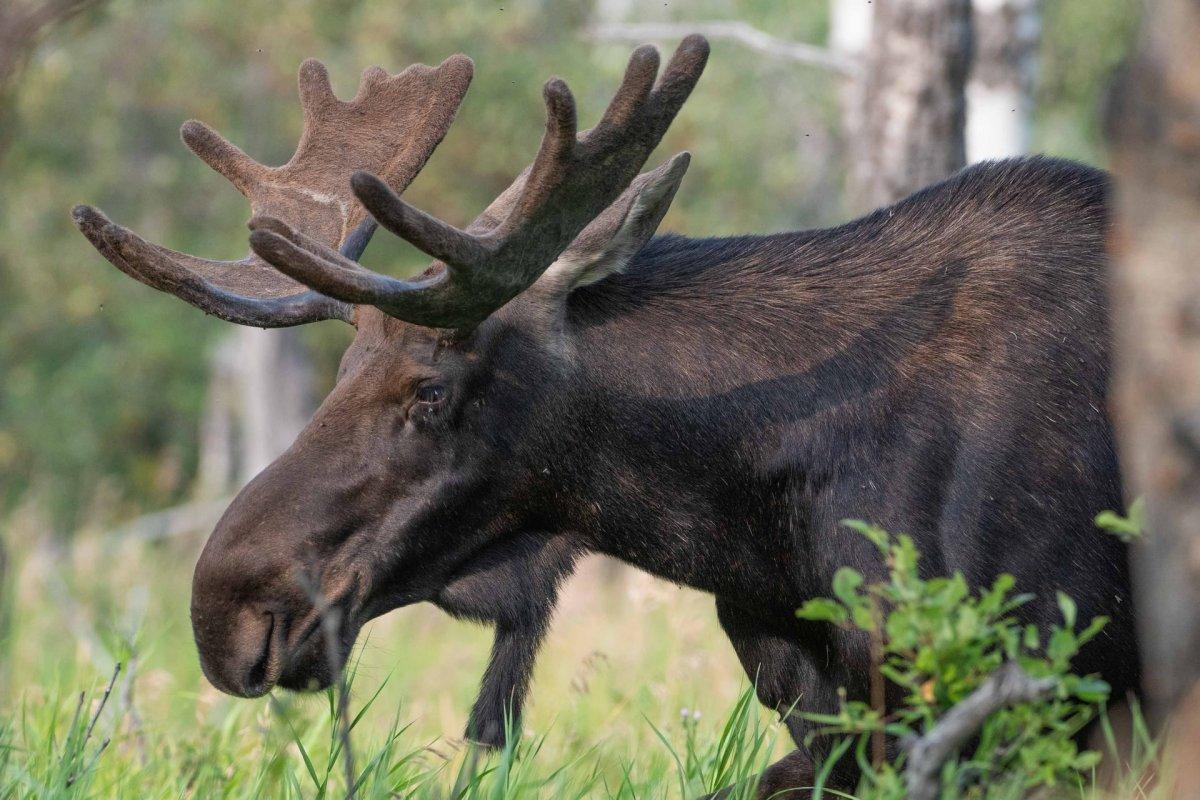
- Name: Moose
- Scientific name: Alces alces
- Conservation status:
The moose, known in Eurasia as the elk, is the largest and heaviest species of deer in the world. Males have unique, very broad antlers, and this species inhabits boreal and temperate broadleaf and mixed forests of the Northern Hemisphere, from arctic regions to temperate areas.
This ungulate’s range has declined over time because of hunting and other human activities. It is an herbivore and feeds on terrestrial and aquatic vegetation.
3. European bison
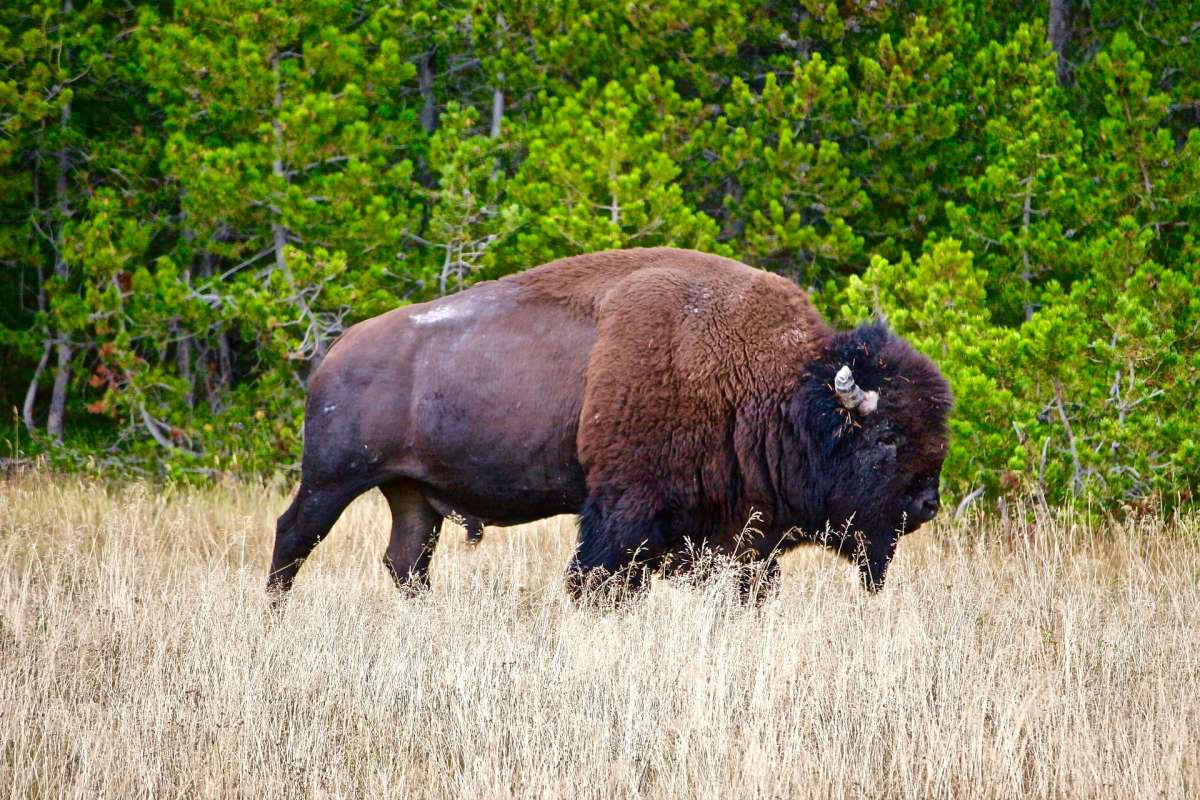
- Name: European bison
- Scientific name: Bison bonasus
- Conservation status:
The European bison, also known as the European buffalo, the zubr, or the wisent, is a large species of bovid and one of two species of bison in the world. Much less famous than its American counterpart, it is the heaviest land animal in all of Europe, and only survives in scattered populations in a multitude of countries after being hunted to extinction in the wild.
Outside of humans, bison have no natural predators, although reports from the 19th century suggest that wolves, tigers, lions, and bears were hunting bison.
4. Gray seal
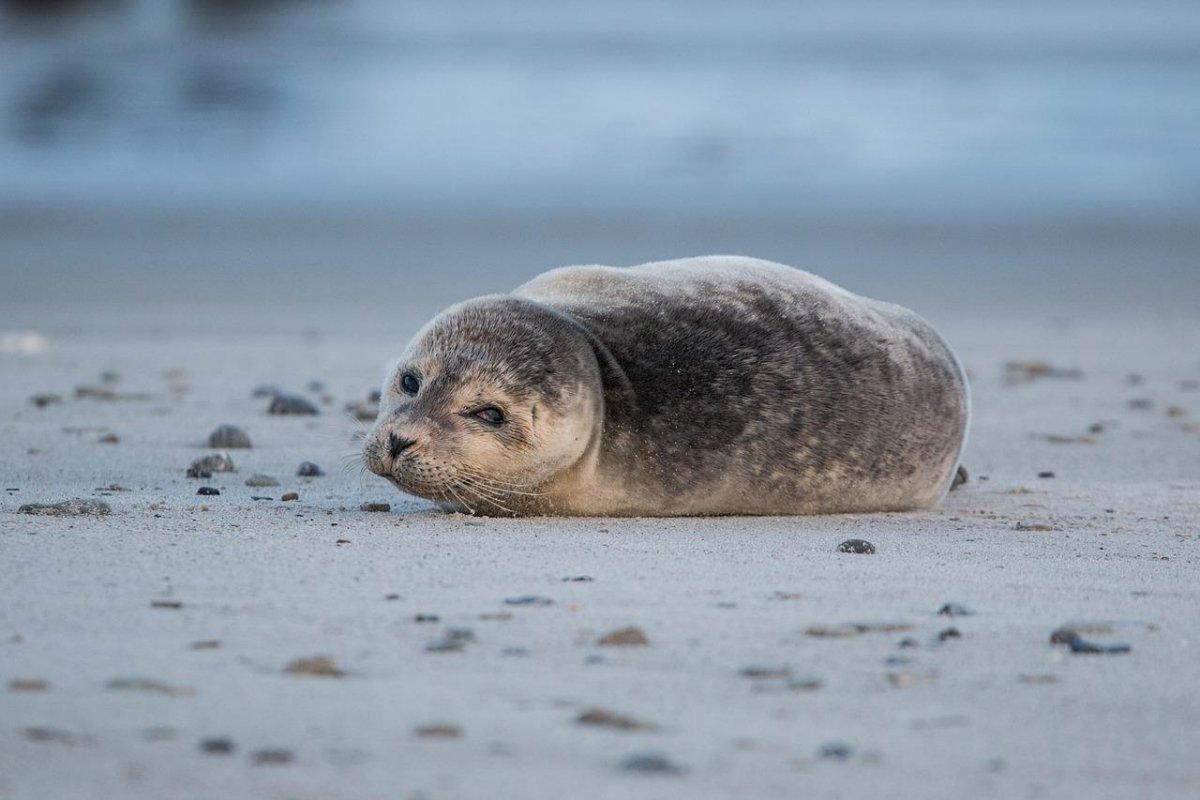
- Name: Gray seal
- Scientific name: Halichoerus grypus
- Conservation status:
The gray seal, also known as the Atlantic seal or the horsehead seal, is a large species of seal native to both shores of the Atlantic Ocean. A distinct subpopulation, Halichoerus grypus grypus, can be found in the Baltic Sea, where Lithuania is situated.
When it comes to feeding, the gray seal hunts for a broad range of fish, taken at depths down to 70 m / 230 ft or more.
5. Stoat
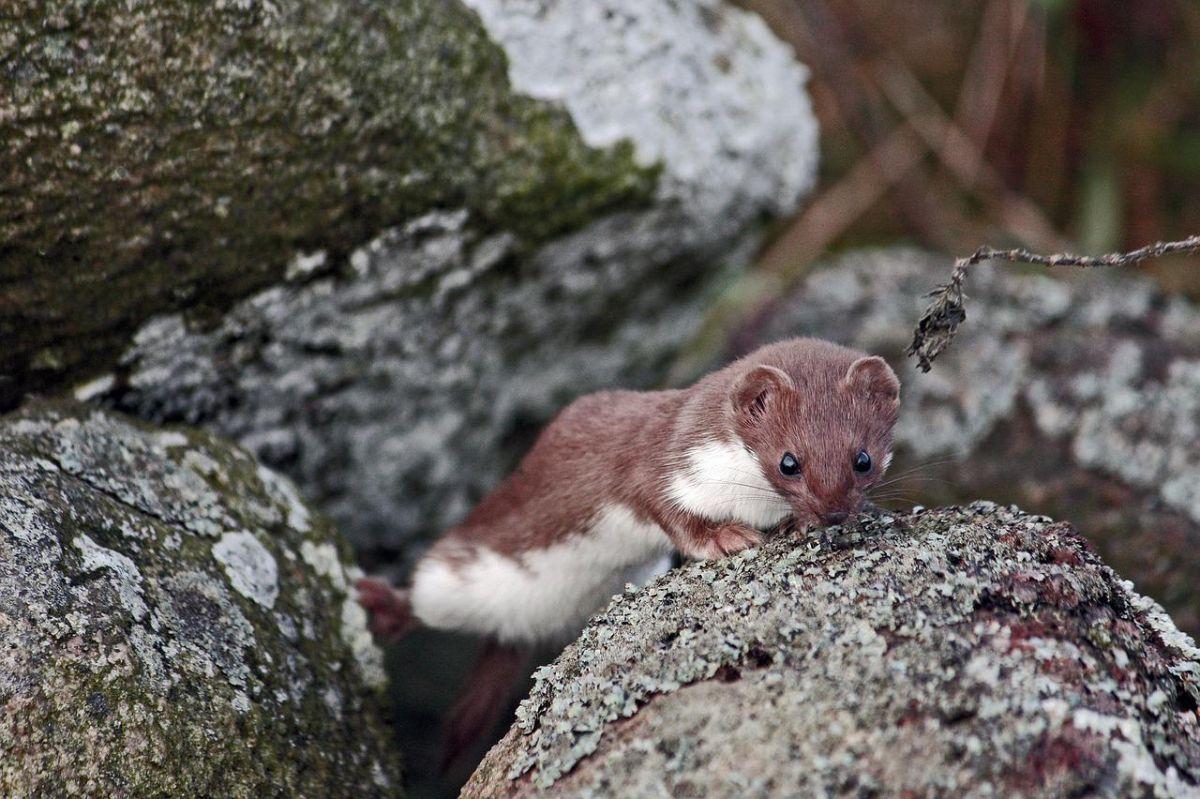
- Name: Stoat
- Scientific name: Mustela erminea
- Conservation status:
The stoat, also known as the ermine or the short-tailed weasel, is a species of mustelid native to much of Eurasia and the northern parts of North America.
It has also been introduced to New Zealand to control rabbits, but has instead had a catastrophic effect on local biodiversity as it killed many native bird populations; because of this, it is considered one of the world’s top 100 worst invaders.
6. Gray wolf

- Name: Gray wolf
- Scientific name: Canis lupus
- Conservation status:
The gray wolf is the largest species of canid in the world. It is also one of the most emblematic animals of Europe and plays a prominent role in local folklore and literature.
There are about 300,000 gray wolves in the world, and they have had a long history of interaction with humans, sometimes feared, sometimes considered a pest, and even hunted. Despite its aggressive reputation, most attacks on humans can be attributed to individuals suffering from rabies.
7. Red fox
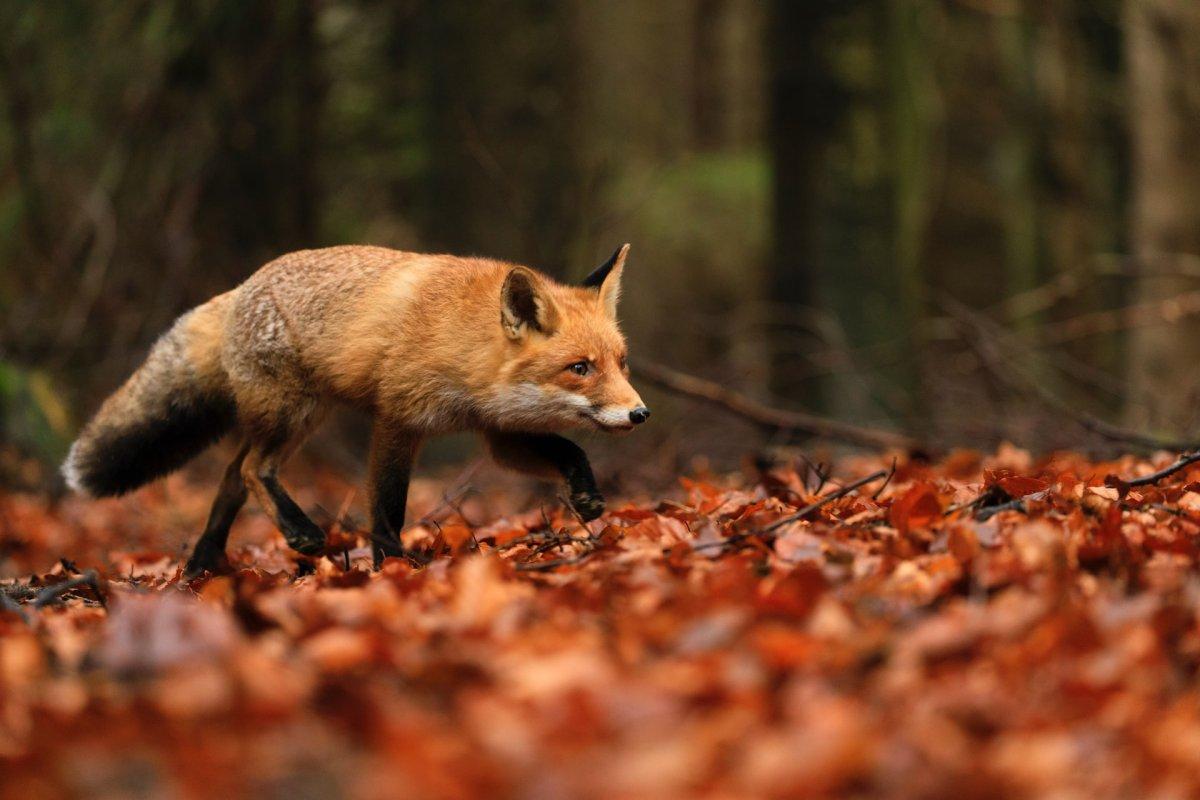
- Name: Red fox
- Scientific name: Vulpes vulpes
- Conservation status:
The red fox is one of the most widely distributed species of carnivore in the world, as it can be found throughout much of the Northern Hemisphere, as well as Australia, where it has been introduced.
It is a particularly versatile animal, not only in terms of habitat but also in its diet; it thrives thanks to human expansion and is sometimes considered an invasive species due to its extremely high success as a species.
8. Eurasian lynx
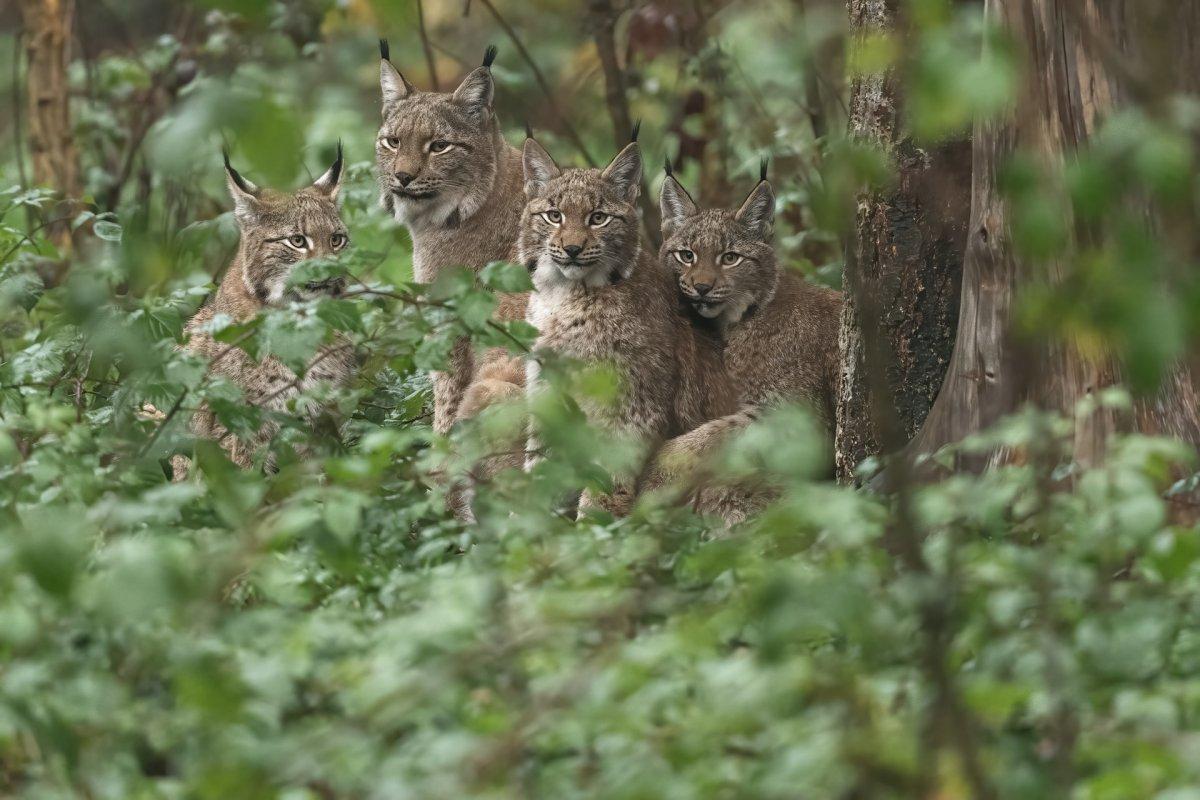
- Name: Eurasian lynx
- Scientific name: Lynx lynx
- Conservation status:
The Eurasian lynx is a medium-sized species of wild cat native to northern, eastern, and central Europe, as well as Central Asia, Siberia, the Himalayas, and the Tibetan Plateau. It hides in the heights of the mountains, at elevations up to 5,500 m / 18,000 ft, and is particularly alert and elusive, making it very difficult to observe.
This wild cat is seriously threatened by poaching, habitat fragmentation, and loss and depletion of prey, but is considered of least concern, for now, thanks to its very wide range.
9. Harbor porpoise
- Name: Harbor porpoise
- Scientific name: Phocoena phocoena
- Conservation status:
The harbor porpoise is one of eight species of porpoise, and one of the smallest cetaceans. As its name suggests, it usually stays near river estuaries and coastal areas and is therefore the most familiar porpoise to whale watchers. There are at least 700,000 individuals worldwide.
However, because of its high proximity to humans, it also suffers a lot from pollution, overfishing, hunting, fishing accidents, and climate change.
10. Western barbastelle
- Name: Western barbastelle
- Scientific name: Barbastella barbastellus
- Conservation status:
The western barbastelle, also known as the barbastelle bat or simply the barbastelle, is a species of bat native to much of Europe and parts of North Africa and the Middle East. It has small eyes, wide ears, and a short nose, and uses echolocation to hunt and navigate, similarly to most bats.
Depending on the part of its range, the western barbastelle is either considered near threatened, vulnerable, critically endangered, or extinct, mostly due to human expansion and habitat loss.
11. Great cormorant
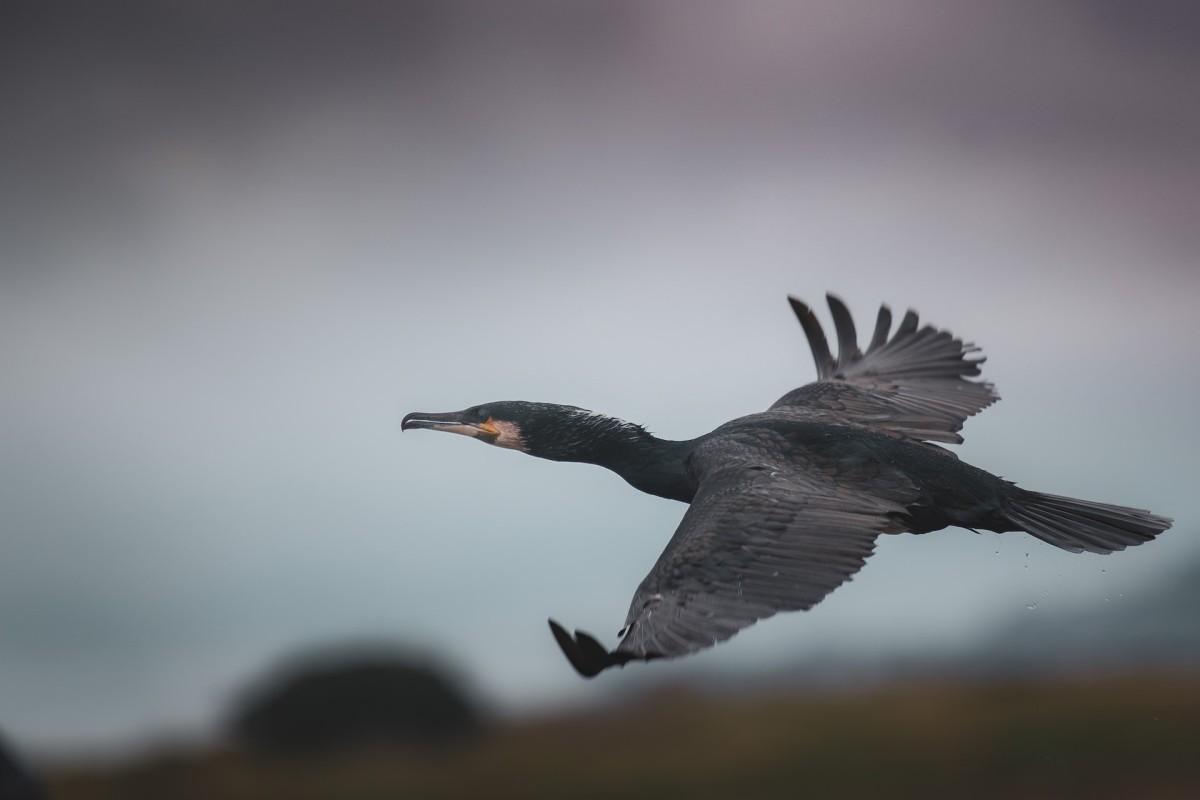
- Name: Great cormorant
- Scientific name: Phalacrocorax carbo
- Conservation status:
The great cormorant, also known as the black cormorant, the large cormorant, or the black shag, is a large species of bird native to a wide range in the Northern Hemisphere. It breeds in Australia, most of the Old World, and the eastern coast of North America.
In China and Japan, but also in other countries, cormorant fishing is practiced. It is a way of using this excellent hunter to find fish for humans; in order for the bird to not ingest the fish, fishermen tie a line around its throat.
12. Western marsh harrier
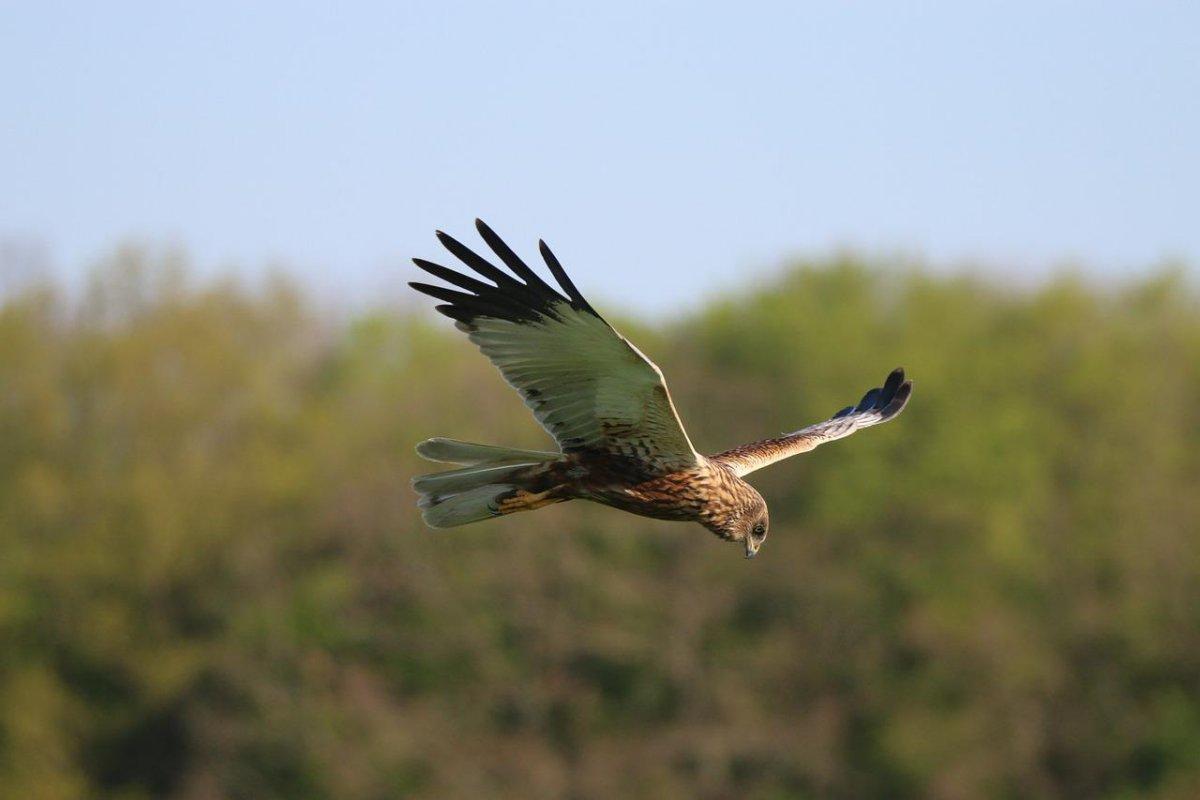
- Name: Western marsh harrier
- Scientific name: Circus aeruginosus
- Conservation status:
The western marsh harrier, also known as the Eurasian marsh harrier, is a large species of bird of prey that can be found in temperate and subtropical areas of Eurasia and Africa. It breeds in almost every single country of Europe and can be seen anywhere except for subarctic Scandinavia and mountainous regions.
In order to feed, this harrier glides low over open ground and dives onto its prey, which is mostly small mammals, insects, small birds, frogs, and reptiles.
13. Eurasian otter
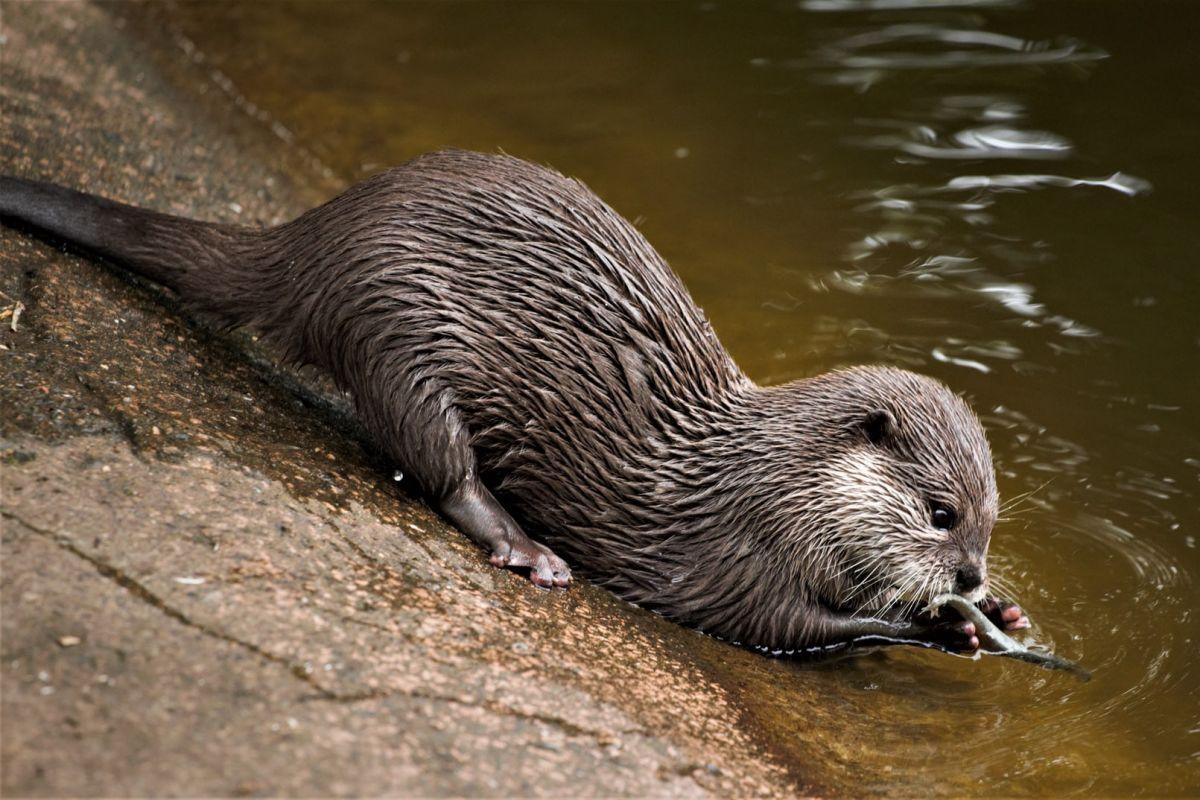
- Name: Eurasian otter
- Scientific name: Lutra lutra
- Conservation status:
The Eurasian otter, also known as the Old World otter, the common otter, or the Eurasian river otter, is a species of semi-aquatic mammal native to much of Eurasia, southeastern Asia, northwestern Africa, and the Indian subcontinent.
Its diet mainly consists of fish, but it will also feed on small mammals, birds, insects, crustaceans, and amphibians, especially during the winter or in colder environments. It is a solitary and territorial mammal with a territory of up to 40 km / 25 mi long.
14. European badger
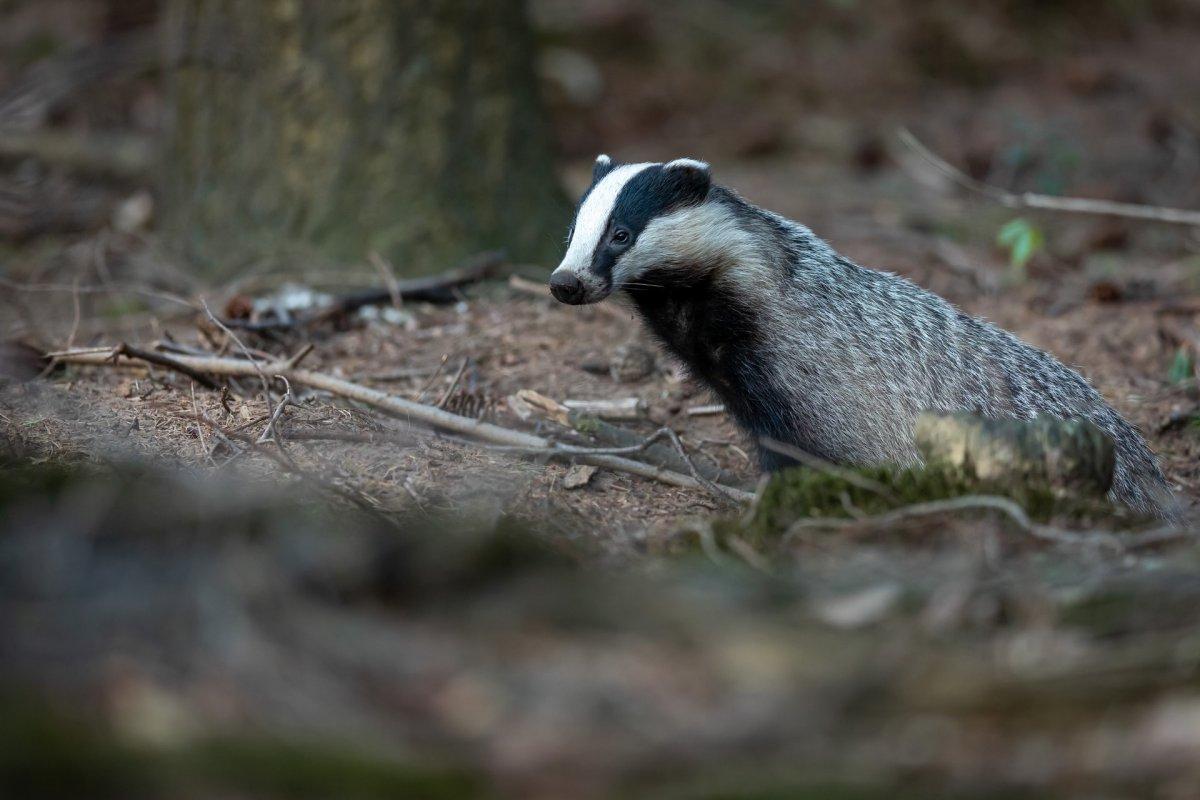
- Name: European badger
- Scientific name: Meles meles
- Conservation status:
The European badger is a species of badger native to Europe and the Middle East. Within its fairly large range, a stable population, and large numbers, it is listed as least concern and is a fairly common animal.
This badger is black, white, gray, and brown, and is stockily built. Even though it is officially considered a carnivore, it is in fact much more omnivorous and feeds on earthworms, insects, small mammals, cereals, tubers, and even carrion.
15. European pine marten
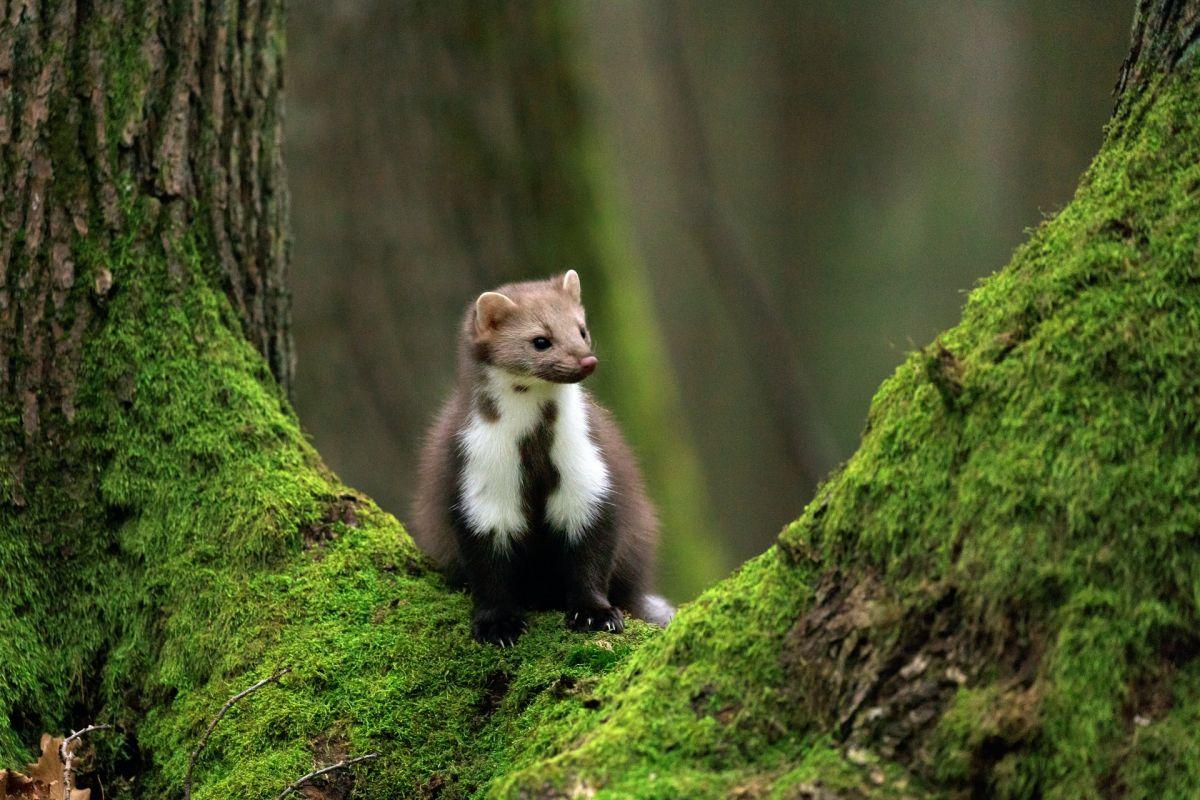
- Name: European pine marten
- Scientific name: Martes martes
- Conservation status:
The European pine marten, also known as the baum marten or the sweet marten, is a species of mustelid native to Europe, the Caucasus, Iran, Iraq, Syria, and western Russia. It is common within its range and inhabits well-wooded areas.
This marten is the only mustelid with semi-retractable claws, which allows it to lead a more arboreal lifestyle: able to climb and run on tree branches, it can find nuts, seeds, and bird eggs that other mustelids cannot.
16. Roe deer
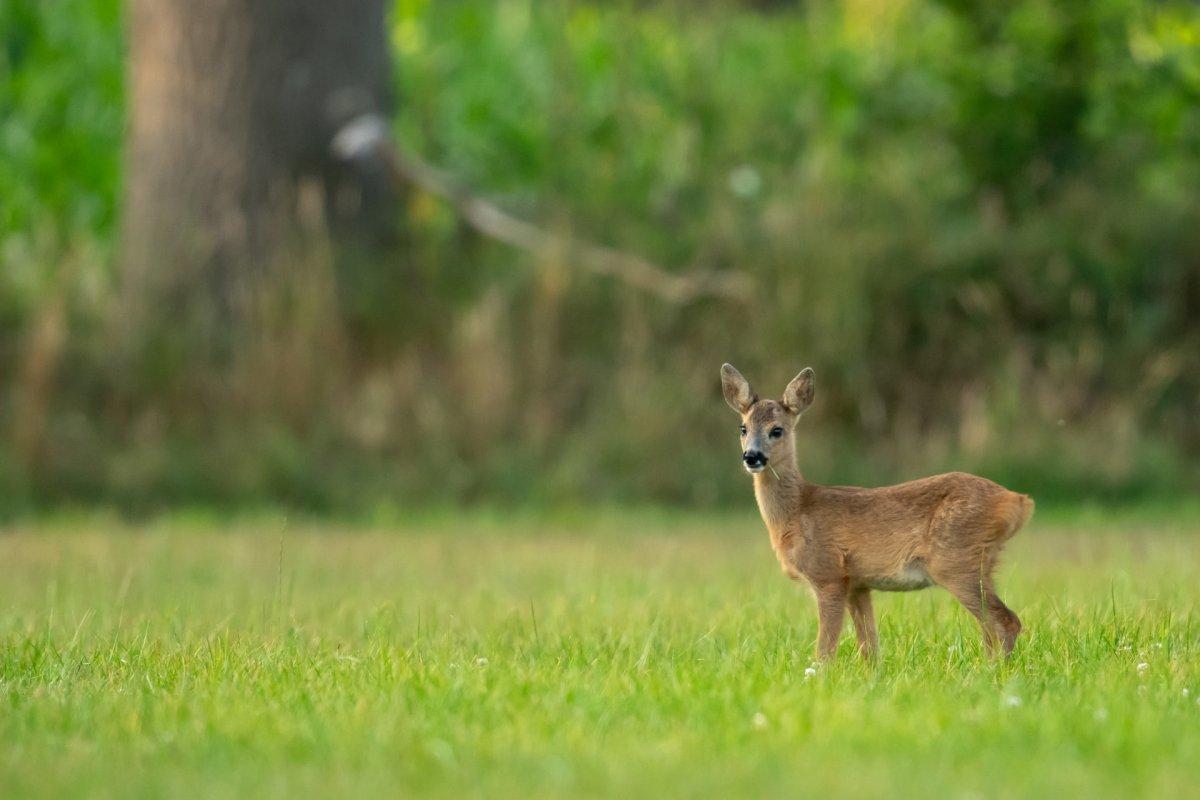
- Name: Roe deer
- Scientific name: Capreolus capreolus
- Conservation status:
The roe deer, also known as the European roe, the roebuck, or the western roe deer, is a species of deer that can be found in all of Europe except for Ireland and the islands of Sardinia and Corsica. It is quite small, has a reddish and gray-brown coat, and is well-suited to cold environments, as it can be found in northern Scandinavia.
This deer feeds on grasses, berries, and leaves, and it stays hidden in dense vegetation cover during the day, before emerging at night and early in the morning.
17. Wild boar
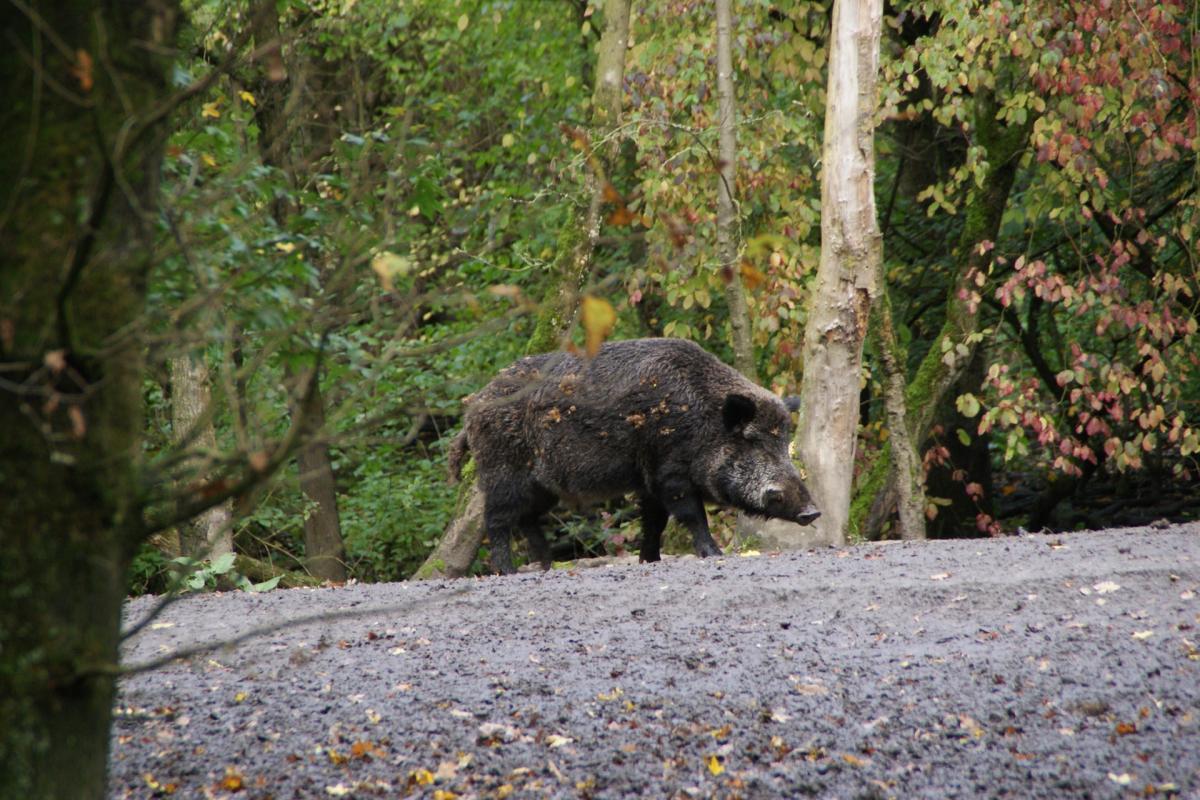
- Name: Wild boar
- Scientific name: Sus scrofa
- Conservation status:
The wild boar, also known as the Eurasian wild pig, the wild swine, or the common wild pig, is a species of suid native to most of Eurasia and North Africa.
It is one of the most widespread and common animals in Europe, as well as one of the most successful species in the world, being found on every continent, and having adapted to almost any habitat.
18. Osprey
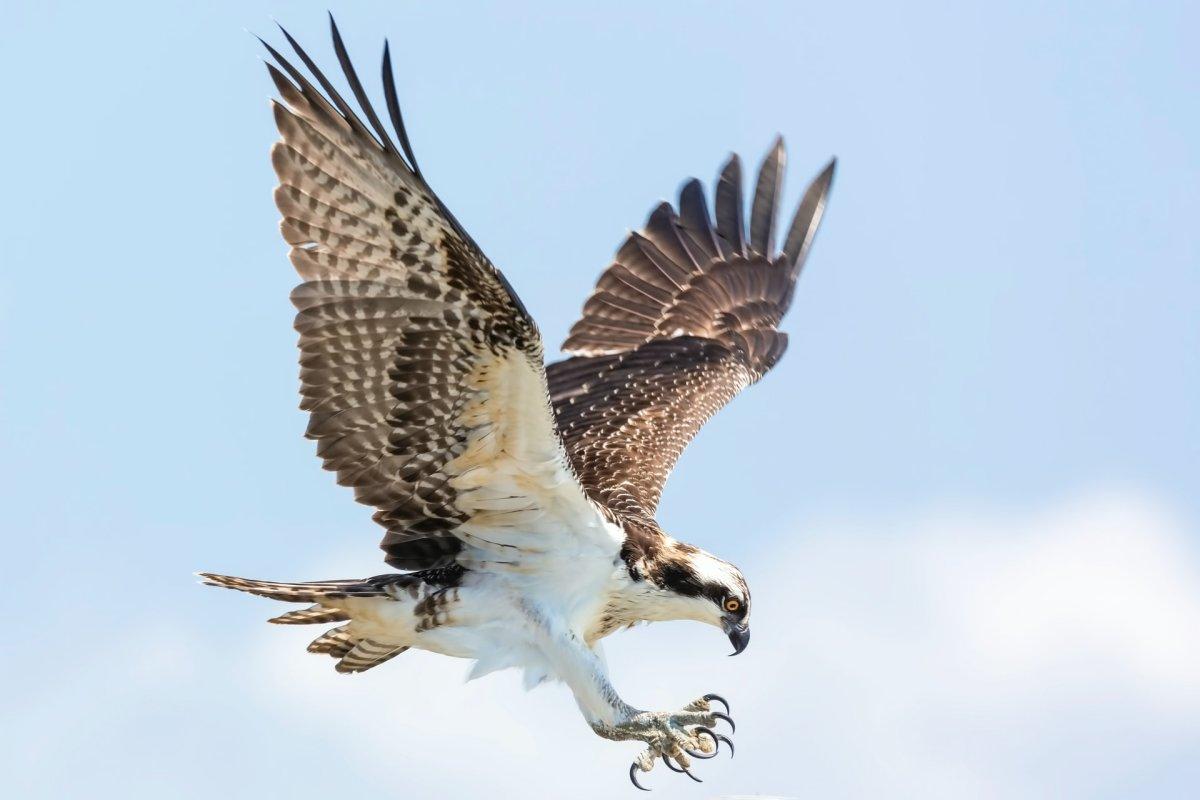
- Name: Osprey
- Scientific name: Pandion haliaetus
- Conservation status:
The osprey, also known as the fish hawk, the river hawk, or the sea hawk, is a species of bird of prey that can be found on any continent, except for Oceania.
It is a large raptor that can reach more than 180 cm / 71 in across the wings, and it can tolerate a wide variety of habitats, as long as there is a body of water and enough food supply in the vicinity.
19. White-beaked dolphin
- Name: White-beaked dolphin
- Scientific name: Lagenorhynchus albirostris
- Conservation status:
The white-beaked dolphin is a not-so-famous species of marine mammal native to the northernmost parts of the Atlantic Ocean and the Baltic Sea. It is quite abundant in European waters and was one of the first species of dolphins to be known to science.
This oceanic dolphin lives in waters less than 1,000 m / 3,300 ft deep, and mostly feeds on fish. It is acrobatic and frequently rides on the bow wave of high-speed boats.
20. European hedgehog
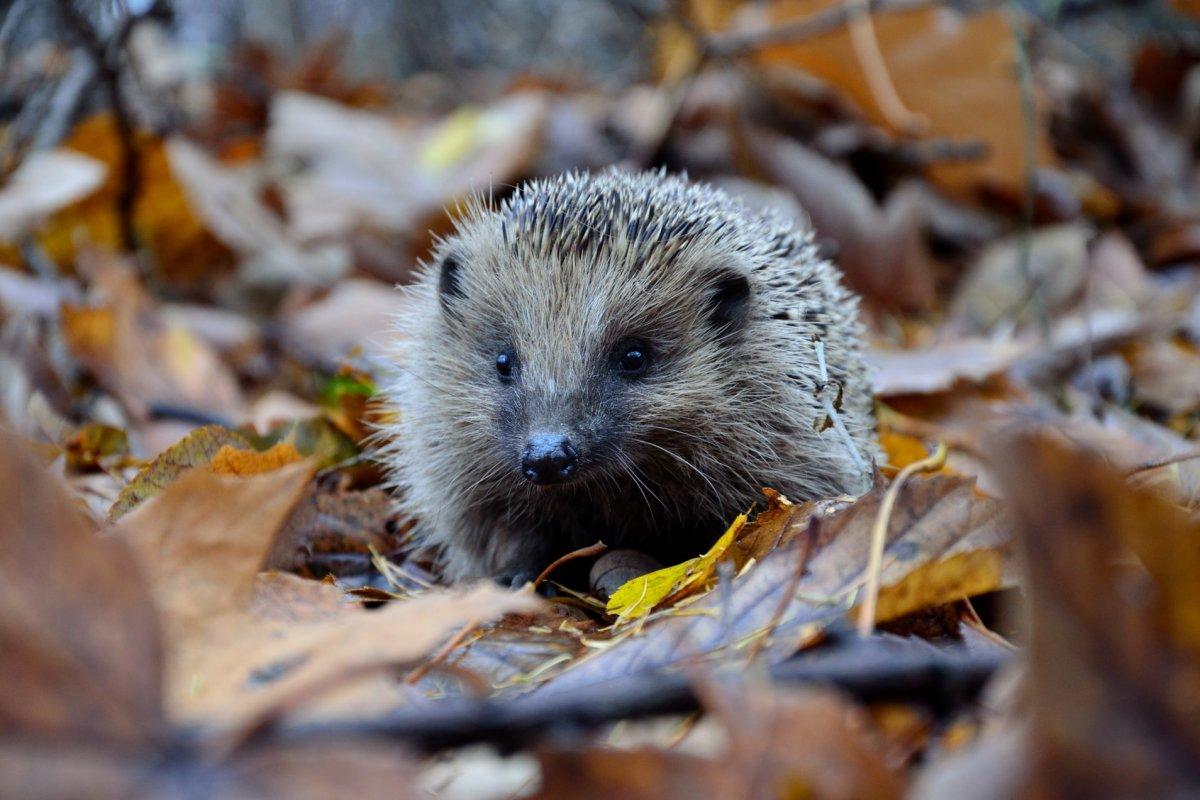
- Name: European hedgehog
- Scientific name: Erinaceus europaeus
- Conservation status:
The European hedgehog, also known as the common hedgehog or the West European hedgehog, is a species of hedgehog native to most of Europe, from the Iberian Peninsula to the British Isles and Scandinavia.
It is a well-known animal in Europe, as it can be found in gardens; widely appreciated for its peaceful behavior and its diet (mostly made of a wide variety of garden pests), it is the unofficial symbol of NATO.
—
So there you have them, these were my 20 animals part of the Lithuania wildlife. I hope you enjoyed this list and that you learned something new today.
In case you want to learn more about animals in the country, feel free to keep reading, as I still have lots of things to tell you about:
Endangered Animals of Lithuania
This is definitely the saddest part of the list, but it is very important to raise awareness. Because of this, let’s go through the list of endangered animals in Lithuania.
Here are the animals in danger of extinction in Lithuania.
- None
- European mink
- European eel
- Saker falcon
To see the full list of endangered species in Lithuania, head over to the International Union for Conservation of Nature’s Red List.
What is the National Animal of Lithuania?
The Lithuania national animal is the white stork.
According to the legend the white stork is supposed to deliver babies to humans, usually by dropping them down the chimney. It is a large black, white and red bird that feeds on small mammals, birds, insects, reptiles, fish, and amphibians.
It has influenced human culture and folklore a lot, mostly due to its close nesting site (usually on rooftops or poles) as well as its predation on vermin.
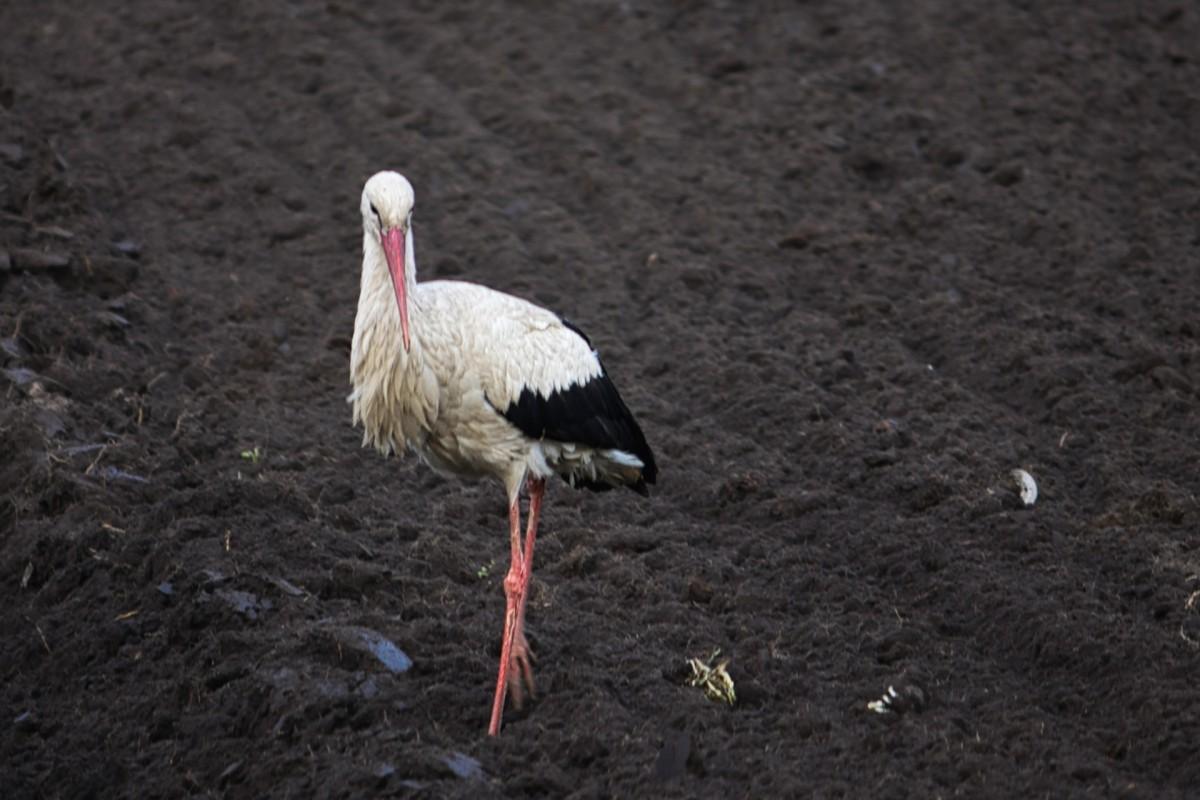
How Many Animals Native to Lithuania?
What is the diversity of native animals in Lithuania?
Let’s look at the total number of species of Chordata (mammals, birds, fishes, and reptiles).
Total number of animal species in Lithuania: 437 (3,149 in total in Europe)
What dangerous animals live in Lithuania?
There are at least 4 dangerous animals that live in Lithuania, and you might not expect all of them.
First off is the common adder, the only venomous snake that can be found in the country. It is well-hidden and does not hesitate to bite when stepped on.
Secondly, wolves can be dangerous, and 22 attacks have been recorded from 1989 to 2001. Despite this, they usually stay hidden and only attack when threatened.
Then, the moose, a very large mammal, can be dangerous because of incredibly large hooves that can kick at or trample a human.
Finally, the wild boar has attacked hunters or intruders on its territory many times and can cause deep cuts with its tusks and teeth.
More About Animals in the World!
Loved these Lithuania animal facts? Want to see what animals live in other countries?
Then check out these posts:
Or click here to see ALL the facts up on the blog! Spoiler alert: there’s A LOT of them.
Share the knowledge! Click on the buttons below to share information about these famous animals in Lithuania with your friends, and help them learn more about the world 🙂
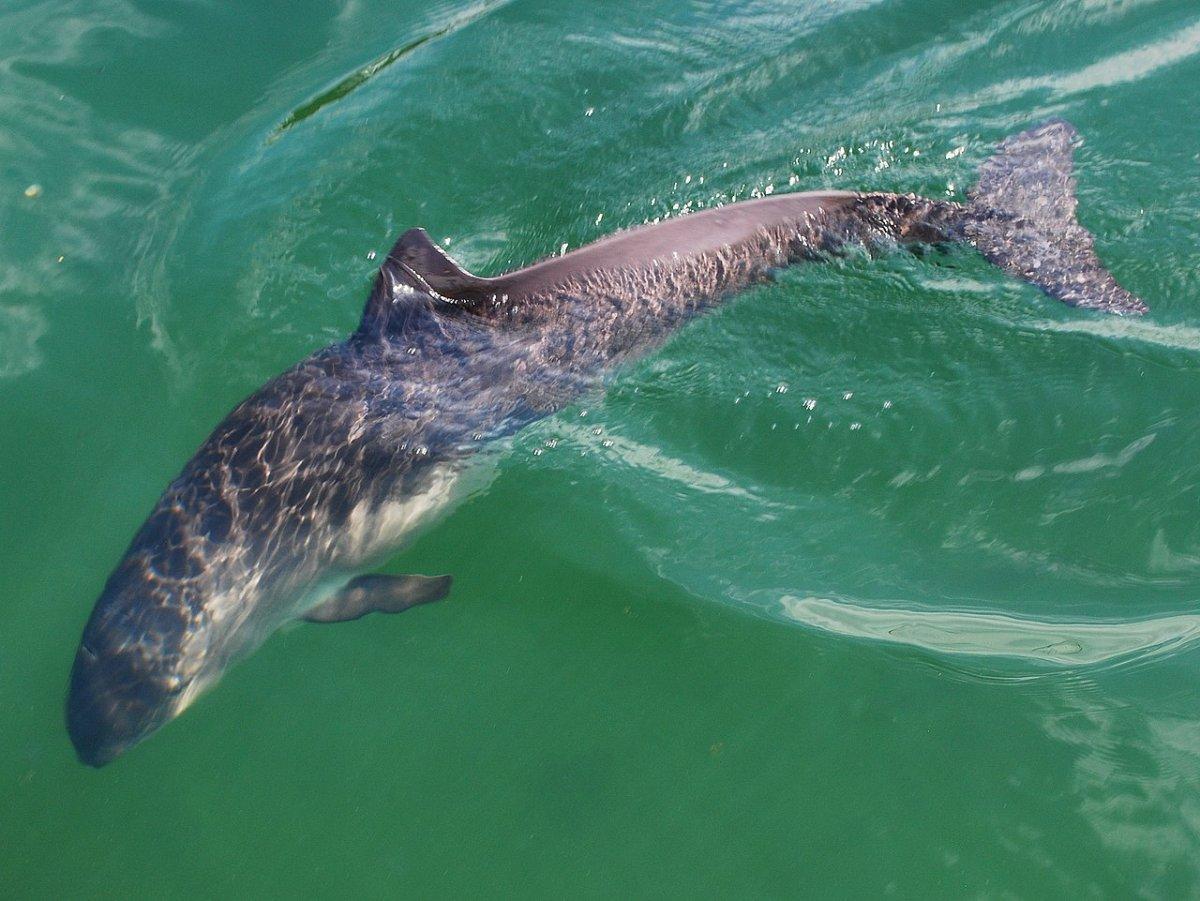
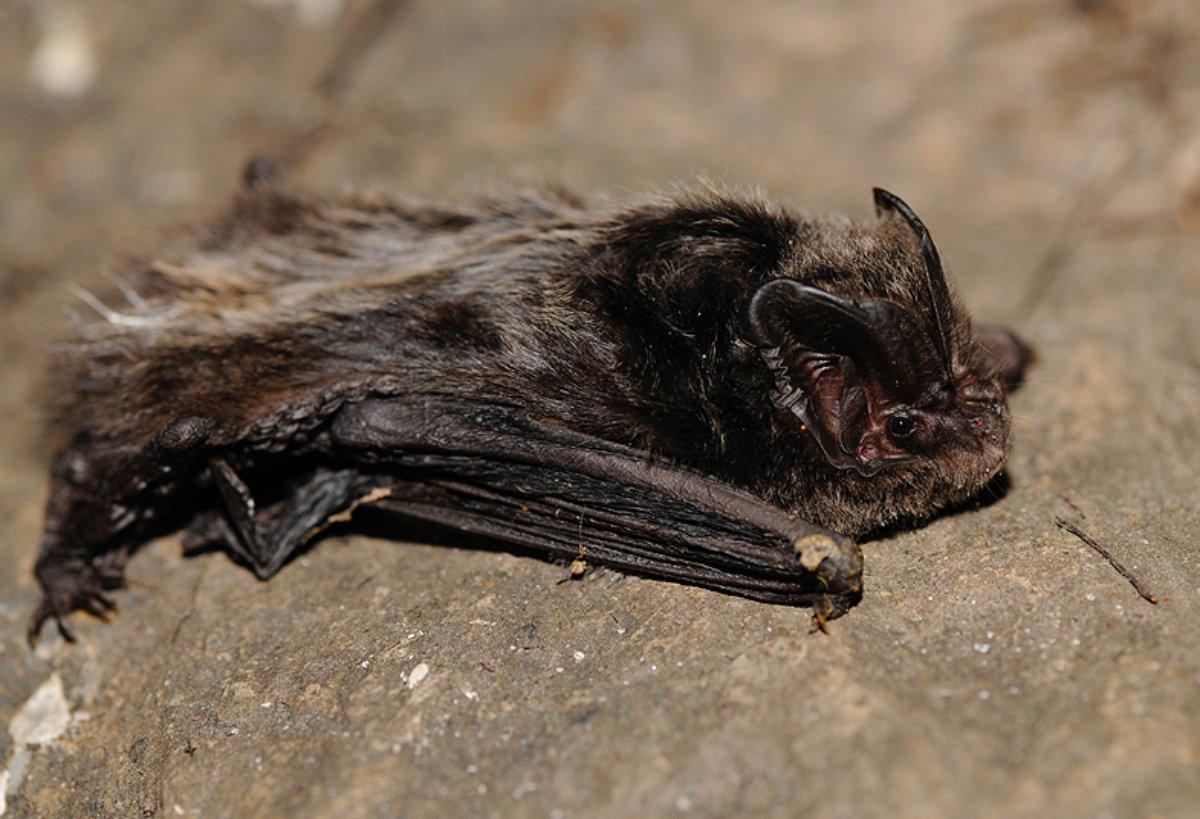

![16 Wild Animals in Romania [Wildlife in Romania]](https://www.kevmrc.com/wp-content/uploads/2022/08/16-wild-animals-in-romania.jpg)
![15 Wild Animals in Barbados [Wildlife in Barbados]](https://www.kevmrc.com/wp-content/uploads/2022/08/15-wild-animals-in-barbados.jpg)
![18 Wild Animals in Zambia [Wildlife in Zambia]](https://www.kevmrc.com/wp-content/uploads/2022/11/18-wild-animals-in-zambia.jpg)